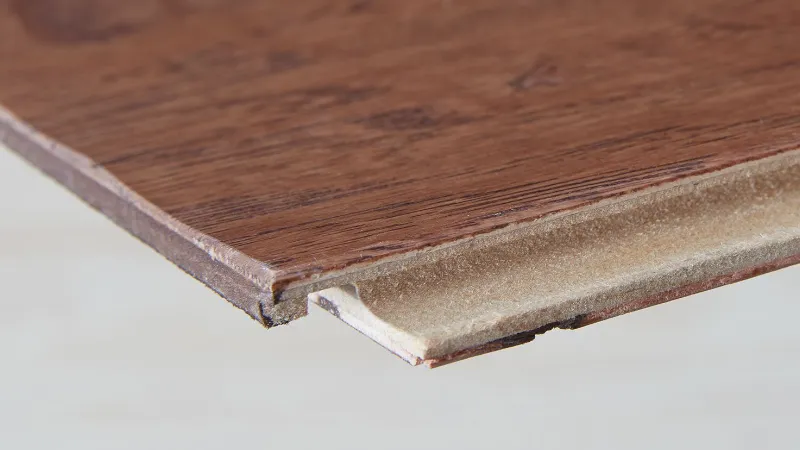If you want a new floor in your home that has the appearance of natural hardwood, laminate and engineered hardwood are two excellent options. But how can you tell which one is best for you? That’s why we created this blog, to assist you!
Laminate Flooring Vs. Engineered Hardwood Flooring: The main distinction between the two types of flooring is that engineered hardwood floors have a real hardwood surface, whereas laminate floors are structurally very similar to them.
For more information, continue reading.
What is Laminate Flooring?
The backing layer, core layer, image layer—which is actually a photograph of various materials—and wear layer are the four layers that make up laminate flooring. Laminate floors is also called a “floating floor” because they aren’t fastened directly to a subfloor. Instead, individual planks are installed over a thin underlayment pad after snapping together to form tight seams. That means laminate flooring can be installed directly over old flooring without nailing, gluing, or having to take the old flooring out.
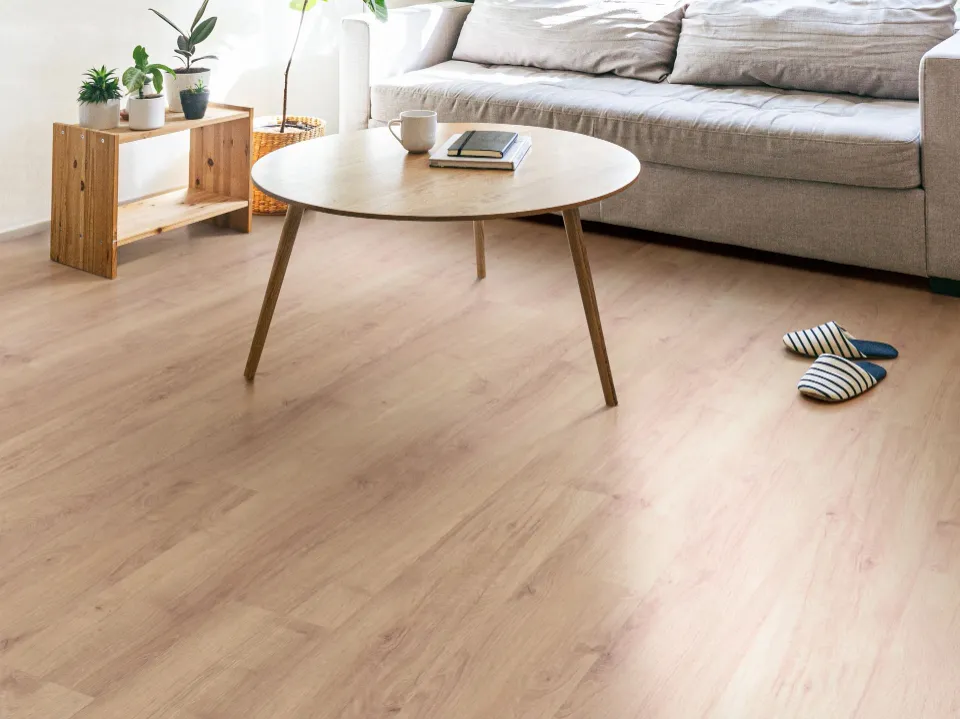
What is Engineered Hardwood Flooring?
Engineered wood floors are built similarly to laminate floors, with the exception that the top decorative layer is a thick veneer of real wood that is covered in a clear acrylic coating for protection. Engineered wood has the same traditional, timeless appearance as traditional hardwood thanks to the natural top layer’s durability.
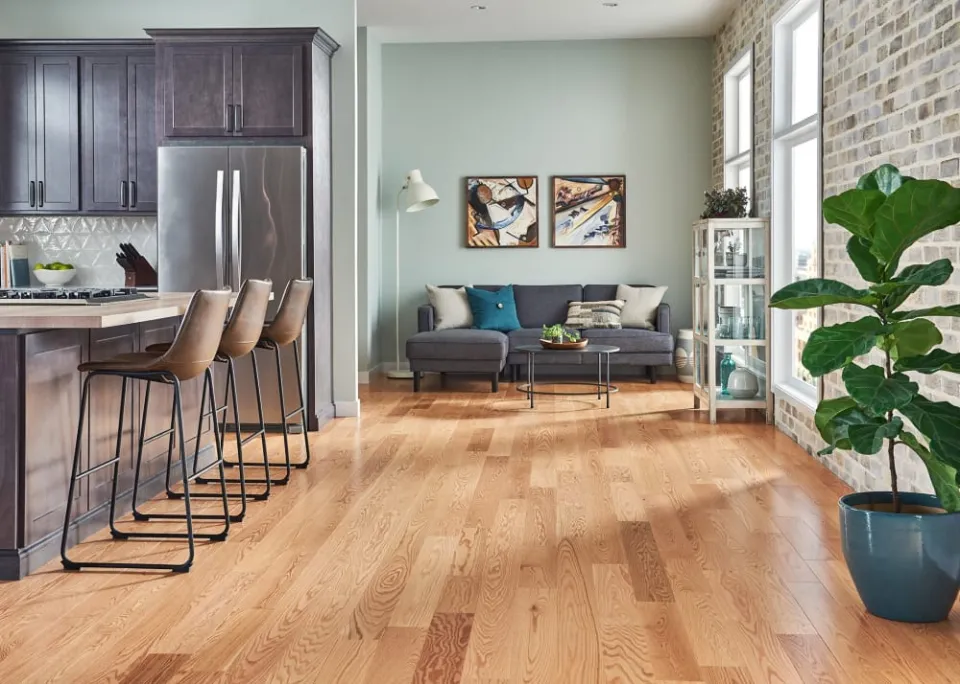
Laminate Flooring Vs. Engineered Hardwood Flooring
The specifics of laminate flooring vs. Engineered hardwood flooring:
Cost
The price ranges for laminate and engineered hardwood flooring range from affordable prices to luxurious designs. Prices typically increase for laminates with improved technology, spill protection, higher AC ratings, and surface textures.
Depending on the top wood veneer’s thickness, style, species, and brand, engineered floors will cost more.
If cost is a deciding factor, engineered hardwood flooring will typically cost more, though this isn’t always the case. Before choosing between the two possibilities, weigh all the relevant factors.
Appearance and Comfort
- Engineered Flooring
In general, engineered flooring has a better appearance than laminate. The top can withstand close inspection because it is made of real wood.
All of the wood in engineered flooring is on top and bottom. As a result, it feels more substantial underfoot than laminate flooring, just like solid hardwood flooring. The pre-sanding and coating of all engineered hardwood flooring makes it smooth and splinter-free.
- Laminate Flooring
From a distance, laminate flooring can convincingly resemble real wood. When examined closely, however, this similarity disintegrates.
Underfoot, laminate flooring has a soft, almost springy feel thanks to its synthetic core and foam underlayment. Under socks or bare feet, the wear layer is comfortable and smooth, but it can be slippery.
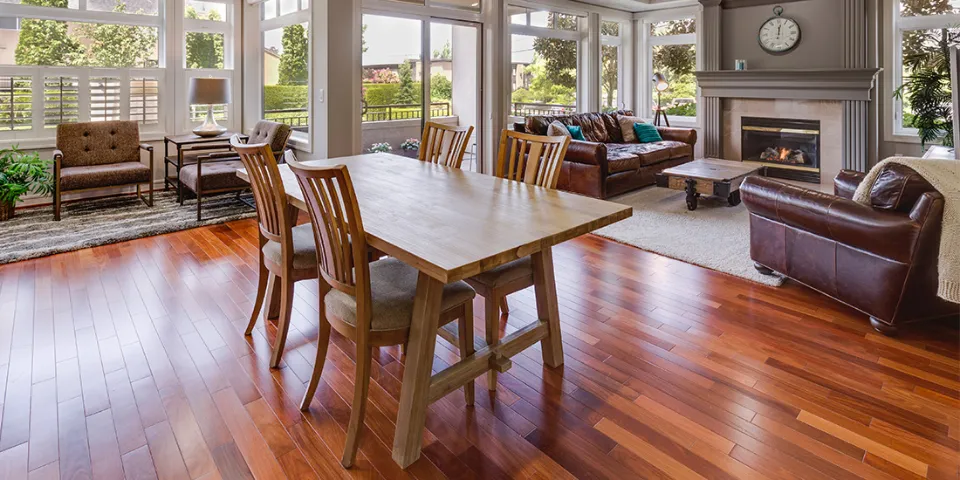
Durability
Engineered hardwoods and laminates are both made very similarly, making them both very durable products. The durability of the surface will be the main distinction between laminates and engineered hardwood. The fact that engineered hardwoods have a real hardwood veneer makes them more prone to surface dents, scratches, and expansion; however, the majority of these floors come with a protective top layer to help protect against wear.
Laminates have an Aluminum Oxide surface layer that guards against fading, spills, stains, and scratching.
Ease of Installation
Engineered Flooring
Engineered flooring traditionally requires either nail-down or glue-down installations.
There is no need to attach to the subfloor when installing some more modern types of engineered flooring when using click-lock joinery. Although these floors do have a real wood veneer, they are more akin to laminate flooring than true engineered hardwood flooring because they use HDF as their core.
Laminate Flooring
Laminate flooring is far easier to install than engineered hardwood flooring. Laminate boards never attach to the subfloor or underlayment; instead, they float as a floor, attaching only side to side. The flooring doesn’t slide once it is installed because of its weight and friction. Even a utility knife can be used to cut laminate boards easily.
Ease of Cleaning
Without a doubt, laminate floors are the less-complicated option in terms of maintenance. You should adhere to hardwood floor maintenance instructions when it comes to engineered flooring. Regular sweeping, vacuuming, and spill cleanup are necessary for both types of flooring.
Acetone, red wine, coffee, and other common household chemicals won’t cause laminates to stain. Spills and chemicals can harm engineered hardwood floors because of the hardwood veneer.
Suggested reading: Types of flooring you can put over ceramic tile includes ceramic tiles, laminate flooring, vinyl flooring, carpet, epoxy coating, cork flooring, wood flooring, and new fired tile. But, why choose these floorings? Below will give specific reasons.
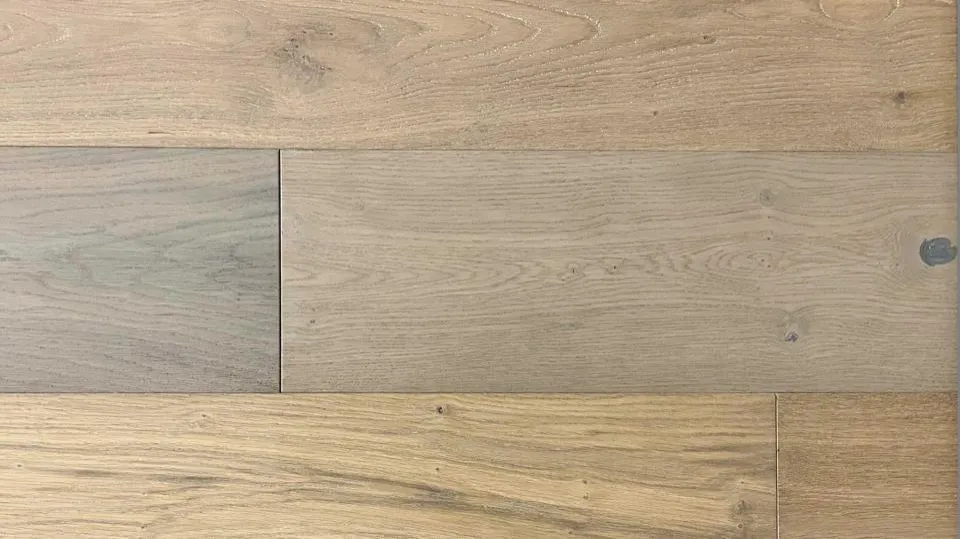
Sizes
- Laminate
Usually 3 to 7 inches wide and 48 inches long, laminate flooring planks are made of wood.
- Engineered Wood
Engineered flooring boards typically come in lengths ranging from 36 to 48 inches and can be as narrow as 2 1/4 inches or as wide as 7 inches. Some engineered wood flooring designs call for the assembly of boards of varying widths.
Water and Heat Resistance
- Laminate
While some types of laminate are advertised as “water-resistant,” this flooring material has a core layer of fiberboard that can be damaged if water seeps through the many cracks between boards. The plastic surface layer is resistant to water damage, though, as long as moisture is removed quickly.
- Engineered Wood
Engineered wood flooring is usually finished with a very tough, waterproof surface sealer, but both the surface veneer and the plywood base layers are wood, which can swell and warp if they get wet.
Resale Value
- Engineered Flooring
Engineered hardwood flooring can easily maintain or even raise the value of your home thanks to its well-proven quality and attractive appearance. Engineered flooring will blend in seamlessly with a traditional or classic appearance in your home, and potential buyers will notice this.
- Laminate Flooring
Over the past few decades, producers of laminate flooring have made significant efforts to improve the caliber and standing of their product. Even though laminate flooring is no longer regarded as a material of extreme inferiority, home buyers still place less value on it than on engineered wood flooring.
At best, high-end laminate flooring can keep a home’s value the same or even slightly increase it. The value of a home can be negatively impacted by low-quality laminate flooring, however.
Maintenance and Care
Given that both are relatively delicate surfaces that should never be wet mopped, laminate flooring and engineered flooring are equivalent in terms of cleaning and maintenance.
The best way to maintain both types of flooring is to use a dry broom or dry mop for the majority of the cleaning. Do not use steamers or wet mops. Never use harsh cleaning agents with ammonia as a main ingredient.
If you must use liquid on the surfaces, squeeze out the mop as much as you can until it feels almost dry to the touch.
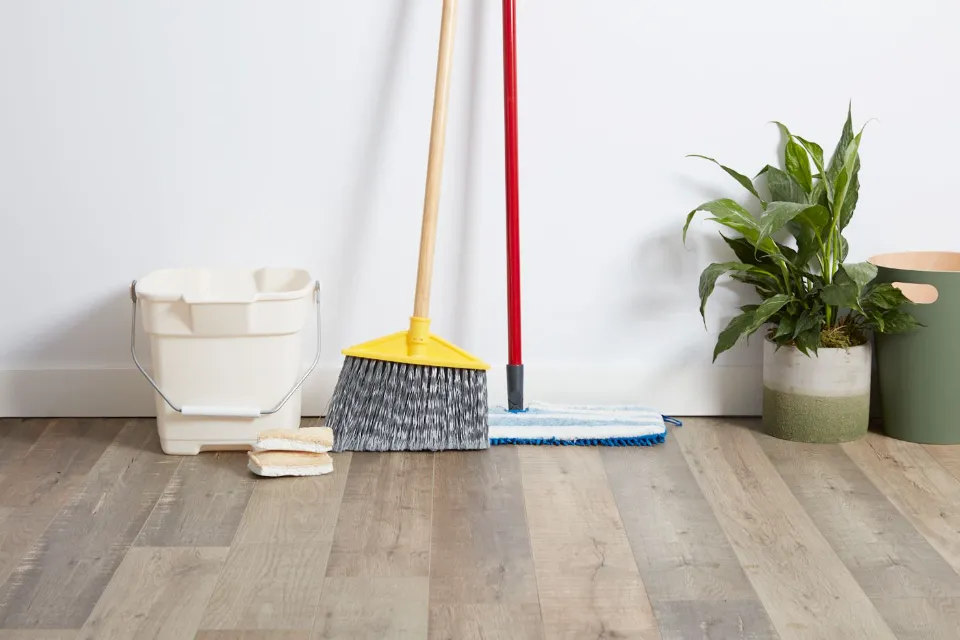
FAQs
Is It OK to Put Engineered Hardwood in a Kitchen?
Engineered hardwood is suitable for kitchen areas, plus it looks and feel great. Additionally, if you decide to sell your home, buyers will value the hardwood or engineered hardwood flooring as a desirable feature.
Do Engineered Wood Floors Look Cheap?
Engineered wood floors are “fake” and “cheap” compared to solid wood floors. This may be true for some of the extremely affordable engineered floors. However, a high-quality engineered floor will have the same appearance and texture as a high-quality solid hardwood floor.
Can Engineered Hardwood Get Wet?
Engineered hardwood floors can handle a bit more water or moisture than solid hardwood floors, but that doesn’t mean you should go in with a soaking wet mop. Before wiping the group, dip your mop into water and wring it out.
Is Engineered Wood Flooring the Best?
Engineered wood flooring is a better choice in high-moisture environments than solid hardwood, making it a better option for kitchens, bathrooms and basements. However, both flooring options provide a wide variety of style options for installations throughout the entire house.
Summary: is Engineered Hardwood Better Than Laminate? Or is Laminate Better?
It is obvious that engineered hardwood has prevailed over other types of wood after examining the similarities and differences. laminate flooring is really up to you. Both are solid, long-lasting flooring options that are less expensive than real wood, beautifully mimic real wood, and are simple to keep looking brand-new and attractive. Consider each of these factors carefully, visit one of our showrooms to see the products we offer in person, and then choose the option that is best for you and your house.
If you have any questions, please leave a comment. My Prime Home tries to give you the best home improvement information. Don’t forget to share the post. Thank you for reading.
Read about:
